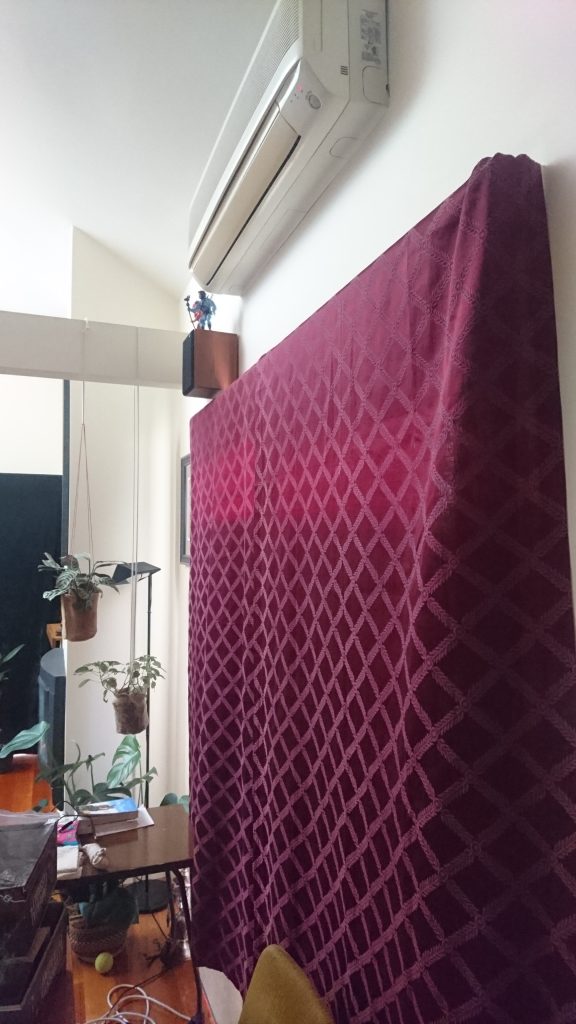We have heard the science, our planet is warming. We’ve spewed out a blanket of extra greenhouse gases in our atmosphere already, laying a doona around the earth that we can’t throw off in the middle of the night. So we must adapt to a warmer climate, and prepare for changing weather patterns. This means for us in Australia that we will have hotter summer days & nights and longer heatwaves.
Many of our houses are not built for withstanding climatic extremes, and so we rely on mechanical systems and energy to power them, to stay comfortable. Unfortunately for some, the cost to keep the air-con running is a barrier, and dealing with extreme heat can be dangerous.
We can find ways to cope better with hot weather, and even prepare our homes to keep the heat out. Summer is around the corner and so now is a good time to think about how you can keep your home cool. Here are some of the actions I use in the home/office:
Shade:
The best way to avoid heat accumulating inside is to stop it getting in. Shading windows facing North, West & East, so the sun doesn’t reach inside. External blinds and vegetation are great. Internal window treatments such as curtains & blinds or a film on the glass is the next option.
If you are a homeowner, or have an agreeable Landlord, retractable blinds are a great option, because they can be used in summer to shade windows and external areas, and then retracted in winter when you want the sun to come in.
Plants in pots can be moved around. Small trees in pots on rollers can work great. Otherwise growing a deciduous vine over a pergola or makeshift structure can do the same job as a retractable awning.
Second hand curtains from the op shop can be a cheap option to cover windows. Here windows have roller blinds fitted. On hot days curtains are tucked over top from the morning, to provide a bit of extra cover.


Vent:
When it cools down, either overnight or when the cool change comes, open up the house completely. If not every window, door & skylight, try for at least one window on each side of the house. Let the cooler air breeze through and take away the extra heat. Having a thermometer inside to compare to the outside temperature (via bom.gov.au) will give you a good indication when to employ this tactic.
Dress (or not):
What are you wearing? Is it what you’d wear outside? If we dress appropriately for the weather outside, we can deal better with the temperature changing inside. Getting accustomed to warmer weather, we can limit the amount of air-conditioning we rely on.
In reverse of putting on a jumper in winter and keeping the heater temperature low, in summer we can wear loose, light clothing (or none at all if that’s your preference!). Then a fan moving air across more of our exposed skin will wick more heat away. Then if the air-conditioner is still needed, it can be put on a higher temperature and not have to work so hard at cooling the incoming air (eg 26-28 degrees).
Reduce heat inside:
Being active generates energy, which contributes to the temperature in the room. By keeping to more sedate activities during the hottest part of the day, we not only keep the room temperature down but we limit the stress on our bodies.
Avoid use of ovens, cooking hobs and irons that would otherwise add unwanted heat to the home. Similarly, some appliances emit warm air and heat can put stress on the equipment that needs to maintain a core temperature, like PCs and devices.
Stay hydrated, rested & in a cool zone:
Air-conditioners work hard to cool all the air in a room. If the door is open to other areas of the house, it is also working to cool the extra space. Try keeping to one room with the doors closed and cooling that space only. The extra space doesn’t need to be cooled for that quick trip to the bathroom down the hall.
Keep animals in the same room, and keep them hydrated.
Micro manage the temperature around you with a fan directed onto you, where it will have the most effect.
Get a scorecard assessment and/or tailored consultation
Having a consultation and/or assessment of your own home can provide a detailed analysis of how to improve your home for summer and winter comfort. It can be valuable to renters, homeowners and landlords.
You can find out more at https://www.homescorecard.gov.au/ or give me a call to chat about how it can help you.

